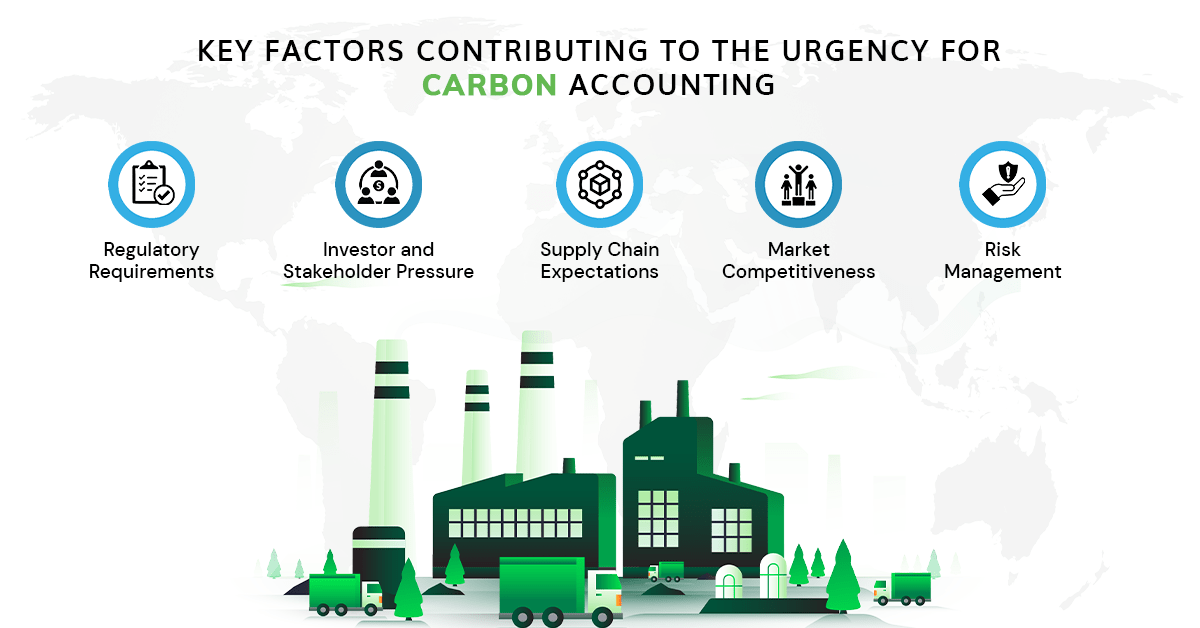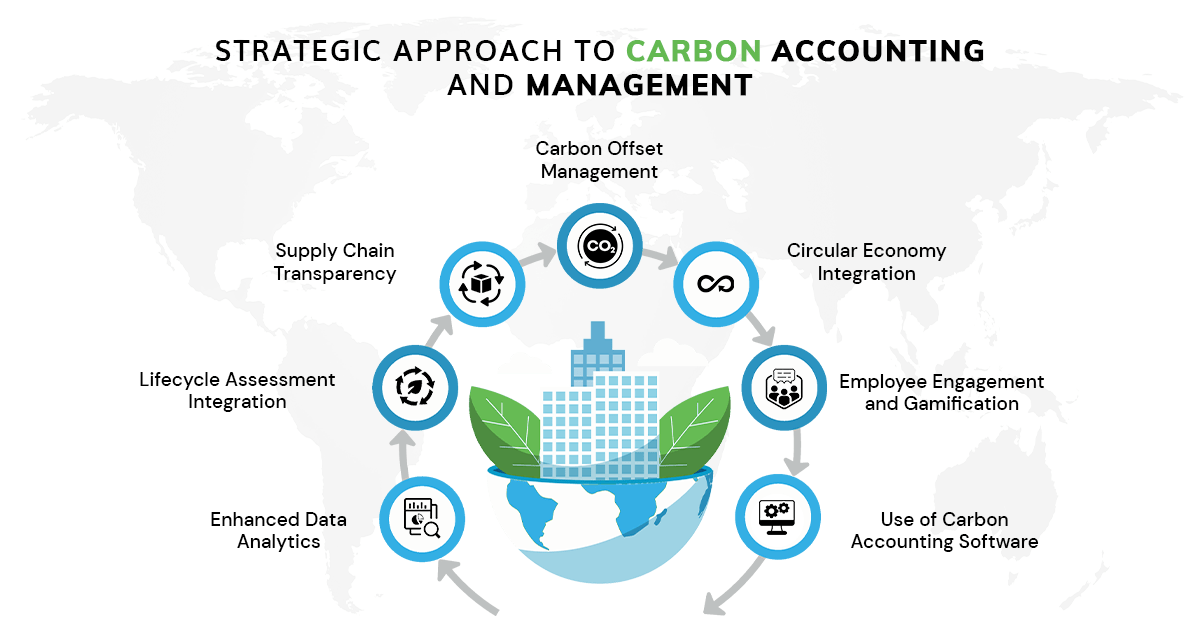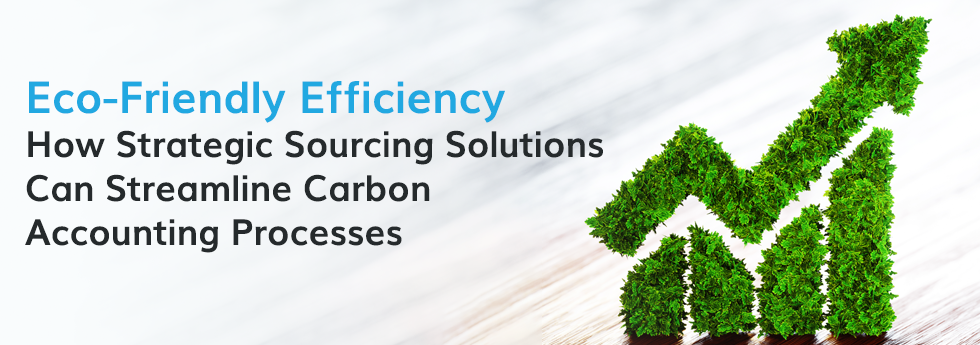As businesses – navigate the complexities of modern commerce, procurement and strategic sourcing have become key areas where sustainability can drive innovation and efficiency. As companies aim to minimise their environmental impact and meet stakeholder expectations, carbon accounting and management have become essential aspects of their sustainability initiatives. This blog will explore how Strategic Sourcing Software solutions can play a crucial role in facilitating carbon accounting and management for businesses.
Inhaltsverzeichnis
ToggleOrganisational Carbon Footprint
A carbon footprint encompasses the total amount of greenhouse gases emitted directly and indirectly by an entity such as an individual, organisation, or product. It comprises Scope 1 emissions, Scope 2 emissions, and Scope 3 emissions.
Scope 1 Emissions: These are direct emissions from sources owned or controlled by the organisation. This typically includes emissions from the onsite combustion of fossil fuels in boilers, furnaces, vehicles, or other equipment owned or controlled by the organisation. It also includes emissions from chemical processes.
Scope 2 Emissions: These are indirect emissions associated with the consumption of purchased electricity, steam, heating, or cooling by the organisation. While these emissions occur at the facility of an electricity provider or another supplier, they are a consequence of the organisation’s activities. Scope 2 emissions are considered as indirect emissions because the organization does not directly control the generation of the electricity or energy.
Scope 3 Emissions: These are all other indirect emissions that occur in the organization’s value chain, but outside of its direct control. They result from activities such as purchased goods and services, employee commuting, business travel, transportation, waste disposal, and other activities related to the organisation’s operations. Scope 3 emissions are often the largest source of emissions for many organisations but can also be the most challenging to quantify and manage due to the complexity of the value chain.
For procurement professionals, understanding these scopes is crucial. Scope 3 emissions often involve suppliers and the entire supply chain, making it imperative to engage in sustainable sourcing practices.
Understanding Carbon Accounting
Effective carbon accounting is crucial for businesses aiming to manage and mitigate their greenhouse gas emissions. It involves quantification and continuous monitoring of emissions stemming from operational activities. Strategic sourcing software solutions play a pivotal role in this process by integrating carbon accounting functionalities directly into organisational frameworks.
These solutions enable business to aggregate and analyse data from diverse sources such as energy consumption, production, transport, etc. By harnessing the strategic sourcing capabilities, companies can accurately measure their carbon footprint, identify areas of reduction and plan initiatives to achieve their objectives. This approach helps with enhanced transparency and foster a positive environmental impact.
The Imperative of Carbon Accounting
According to McKinsey’s Global Energy Perspective 2023, global warming is primarily driven by carbon emissions, which surged to record levels; in 2022, after a temporary decline during the COVID-19 pandemic, emissions reached 36.8 gigatons (Gt), rising by 1.1 percent in 2023 due to economic recovery and heightened fossil fuel consumption, notably coal, amid an energy crisis and soaring natural gas prices. As global concerns about climate change intensify, carbon accounting has evolved from a voluntary practice to a mandatory requirement for businesses worldwide.
Other key factors contributing to the urgency for carbon accounting are:

Regulatory Requirements:
Many governments are implementing regulations that require companies to measure, report, and reduce their carbon emissions. These regulations aim to address climate change by holding businesses accountable for their environmental impact.
Investor and Stakeholder Pressure:
Investors, shareholders, customers, and other stakeholders are demanding transparency and accountability regarding companies’ environmental performance, including their carbon emissions. Investors may integrate environmental, social, and governance (ESG) factors into their investment decisions, prompting companies to disclose their carbon footprint to attract investment and maintain stakeholder trust.
Supply Chain Expectations:
Companies are facing pressure from their supply chains to demonstrate environmental responsibility and sustainability. Suppliers may require their partners to disclose their carbon emissions as part of supplier sustainability assessments or to comply with customer demands for greener products and services.
Market Competitiveness:
In many industries, demonstrating environmental sustainability has become a competitive advantage. Companies that can effectively manage and reduce their carbon footprint may gain market share, enhance brand reputation, and attract environmentally conscious consumers.
Risikomanagement:
Climate change poses significant risks to businesses, including regulatory risks from carbon pricing or emissions regulations, and reputational risks from negative publicity related to environmental issues besides the physical risks from extreme weather events. Carbon accounting helps companies identify, assess, and mitigate these risks, enhancing long-term resilience and sustainability.
A Strategic Approach to Carbon Accounting and Management
Leveraging Strategic Sourcing Software systems alongside next-generation methods holds immense potential to revolutionise carbon management practices. By integrating carbon consumption from the supply chain, the solutions offer unprecedented real-time data collection, analysis, and reporting capabilities.

Enhanced Data Analytics:
Equipped with advanced analytics capabilities, strategic sourcing software solutions can analyse vast amounts of data from diverse sources to identify emission patterns, trends, and opportunities for optimisation. These insights enable informed decision-making and proactive emission reduction strategies.
Lifecycle Assessment Integration:
Lifecycle assessment tools can be incorporated to evaluate the environmental impact of products and processes. By integrating LCA data into the sourcing software, organisations can assess the carbon footprint of their entire value chain, from raw material extraction to end-of-life disposal and optimise resource use accordingly.
Supply Chain Transparency:
Procurement teams can leverage technology to monitor and verify suppliers’ carbon data, ensuring that all partners in the supply chain adhere to sustainability standards.
Carbon Offset Management:
Strategic Sourcing Software can integrate with decentralised finance (DeFi) platforms to streamline carbon offset management. By tokenising carbon credits and automating transactions, organizations can efficiently invest in carbon offset projects and track their impact in real-time.
Circular Economy Integration:
Circular economy metrics can be incorporated to quantify the environmental benefits of circular business practices. By analysing product lifecycle data and circularity indicators, organisations can optimise resource use, minimise waste generation, and reduce carbon emissions.
Employee Engagement and Gamification:
Strategic Sourcing Software can incorporate gamification elements to engage employees in carbon reduction efforts. By incentivizing sustainable behaviours and providing real-time feedback on emission reduction progress, organizations foster a culture of sustainability and drive collective action toward carbon neutrality.
Use of Carbon Accounting Software:
According to Forbes Business Insights, The anticipated expansion of the worldwide carbon accounting software market is estimated to surge from $18.52 billion in 2024 to $100.84 billion by 2032, registering a remarkable Compound Annual Growth Rate (CAGR) of 23.6% during the forecast period spanning 2024 to 2032.
Embracing Carbon Accounting for Sustainable Business
Large corporations and multinational companies are increasingly adopting carbon accounting as a pivotal component of their sustainability agendas, recognizing its role in mitigating environmental impact and meeting stakeholder expectations. Concurrently, smaller businesses and start-ups are following suit, motivated by various factors including the need for market distinction, financial benefits derived from energy efficiency measures, and the allure of accessing green financing options. As carbon accounting becomes more commonplace across businesses of all sizes, adopting carbon accounting practices not only meets regulatory requirements but also enhances competitive advantage. Sustainable sourcing can open new markets and attract environmentally conscious clients, making it a strategic imperative.
Integrating carbon accounting into procurement processes is not just about compliance; it’s about driving long-term value and resilience in the supply chain. Embracing Strategic Sourcing Software Solutions for carbon accounting will be a game-changer in achieving sustainable procurement goals.



